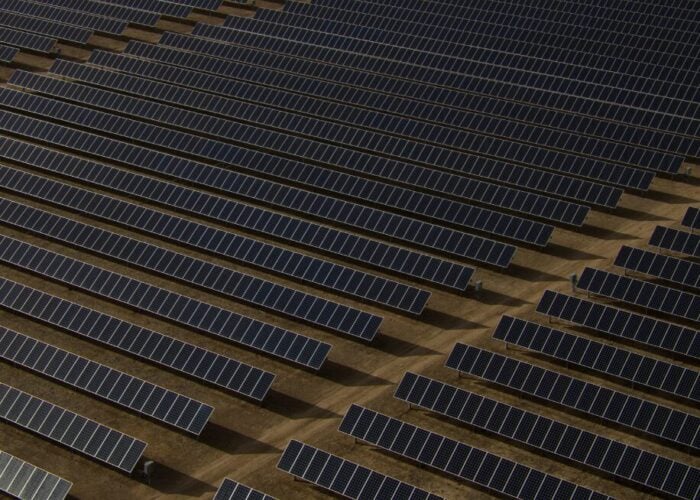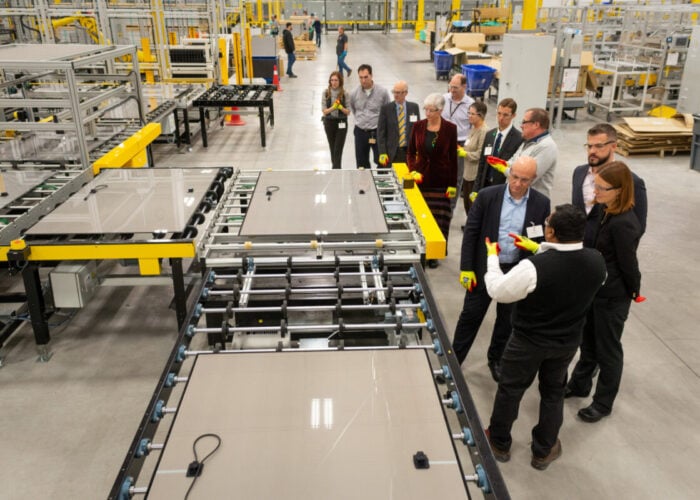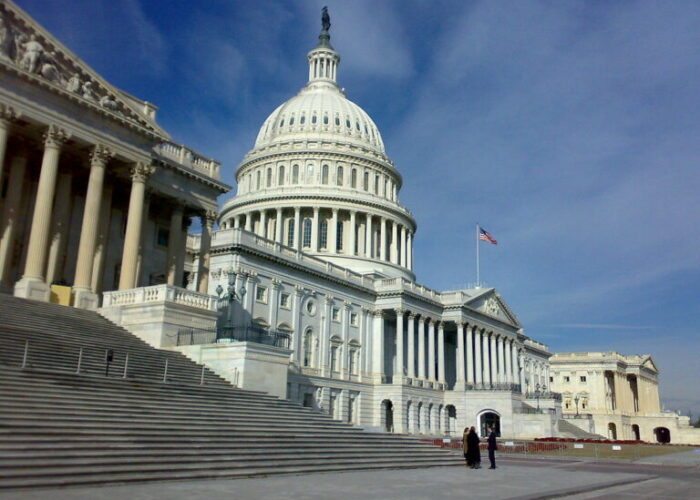
The US House Ways and Means Committee is considering bringing forward the end date for residential energy tax credits (Section 25D) to the end of 2025, among other proposals that could affect the solar industry.
Initially expected to run until the end of 2034, the new provision would end the 30% tax credit, from which residential solar owners are currently benefiting, much sooner.
Try Premium for just $1
- Full premium access for the first month at only $1
- Converts to an annual rate after 30 days unless cancelled
- Cancel anytime during the trial period
Premium Benefits
- Expert industry analysis and interviews
- Digital access to PV Tech Power journal
- Exclusive event discounts
Or get the full Premium subscription right away
Or continue reading this article for free
Released yesterday (12 May), the Committee is expected to vote on the proposed bill today. If it passes the Committee Vote, the bill will then need to pass a vote by the House before going to the Senate for approval.
“The accelerated phase-out would likely trigger a surge of solar installations as homeowners rush to complete their projects before the end of 2025,” said clean energy comparison company EnergySage. According to its data, a typical residential solar panel system costing US$20,552 after the Investment Tax Credit (ITC) could incur an additional US$8,978 cost after the deadline passes.
Section 25D is not the only provision that the Committee aims to end sooner than initially intended for US residential owners. A second amendment from the Reconciliation Bill would move forward the end of the advanced manufacturing production credits (Section 45X) by one year from the end of 2032 to the end of 2031.
A separate proposal will aim to terminate the new energy efficient home credit by the end of 2025, or 2026 if construction began before 12 May 2025. On top of all of these proposals, the bill aims to terminate a number of clean energy and vehicle credits earlier than the dates initially set, in most cases the end of 2032.
Moreover, Sections 112008 and 112009 – dubbed “the Phase-out and restrictions on clean electricity production credit” and “Phase-out and restrictions on clean electricity investment credit” – aim to restrict access to the credit for certain prohibited foreign entities. This includes the use of materials from foreign entities for a facility that begins construction a year after the enactment of the bill, or if the taxpayer is a foreign entity.
Similar to Sections 25D and 45X, the bill also aims to change the phase out dates for the production credits.
“There is a 20% credit reduction for facilities placed in service in calendar year 2029, a 40% reduction for facilities placed in service in calendar year 2030, a 60% reduction for facilities placed in service in calendar year 2031 and zero credit available after December 31, 2031,” reads the bill. “Transferability is repealed for facilities where construction begins two years after the date of enactment of this bill.”
The provisions from the Reconciliation Bill can be accessed here.
‘This is not the time for disruption,’ says ACP
Reaction from the industry to the released text of the Reconciliation Bill has been widely negative, with both the Solar Energy Industries Association (SEIA) and The American Clean Power Association (ACP) claiming it will destroy jobs and force American factories to close.
“If adopted, the proposed language will raise energy costs for American consumers, force American factories to shut their doors and threaten American jobs,” said Jason Grumet, CEO of ACP.
Abigail Ross Hopper, president and CEO of added: “This legislation will cause hundreds of American factories to close, eliminate tens of thousands of jobs, force electric bills to skyrocket for everyone, weaken the reliability of our electric grid and eliminate our capacity to compete with China.”
Hopper added that the legislation would affect red-state economies, with more than “75% of at-risk factories and investments concentrated in these communities.”
“While American businesses are demanding more energy to compete against our adversaries and consumers are turning to clean energy to hedge against rising electricity prices, these proposals will undermine our nation’s efforts to achieve president Trump’s American energy dominance agenda,” Hopper said
The president and CEO of industry non-profit the American Council on Renewable Energy (ACORE), Ray Long, said that the US need to build the equivalent of 12 New York Cities’ worth of new power by 2030 in order to remain competitive with China in the artificial intelligence race, and that this legislation would hamper that goal.
“Energy dominance means a secure, affordable, reliable energy supply that serves as the basis for our national security, technological leadership, and economic prosperity. Achieving this is a bipartisan goal. The House Ways and Means Committee bill, if passed, would hamper these goals,” said Long.
A recent report from ACORE showed that the current tax credits have added US$115 billion in clean energy investments last year, while supporting over 3.5 million jobs. However, ACORE also released a survey of investors and developers in March 2025 where the majority of respondents said the uncertainty over tax credits could cause investors and developers – by 84% and 73%, respectively – to decrease their activity in renewable energy.
Grumet said: “With energy demand surging, this is not the time for disruption. It is possible to phase out incentives for clean energy investment, production, and manufacturing without harming American consumers or businesses — and we stand ready to help.
“As the legislation moves through the process, we will work with lawmakers to ensure that the final product achieves necessary cost savings while maintaining investment certainty, energy reliability, economic growth and global competitiveness.”






